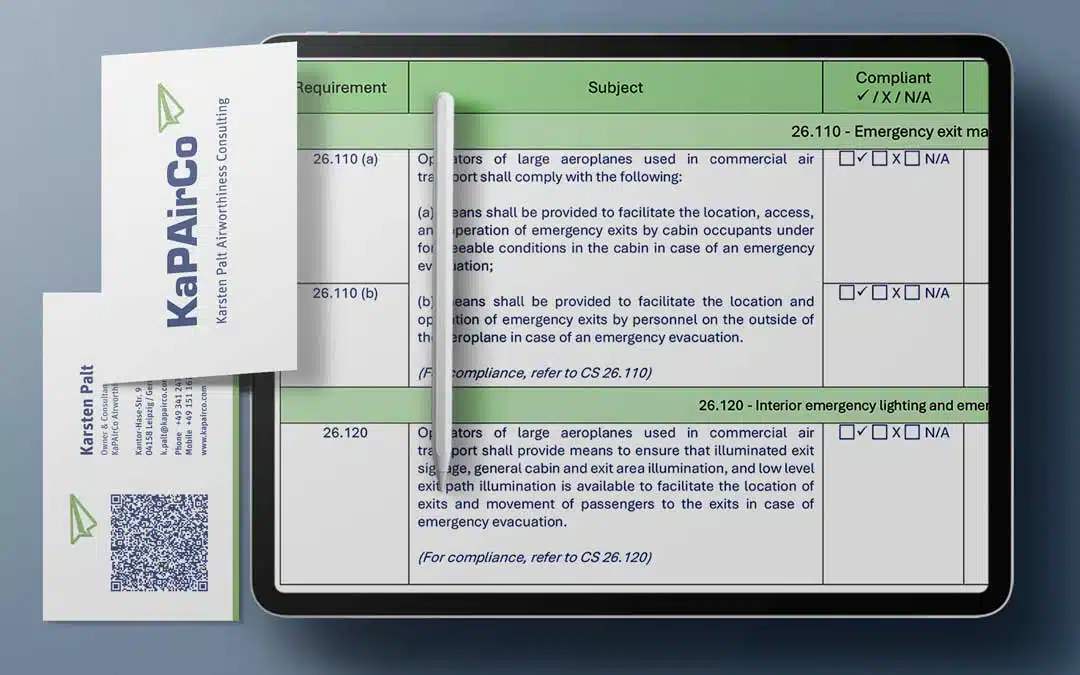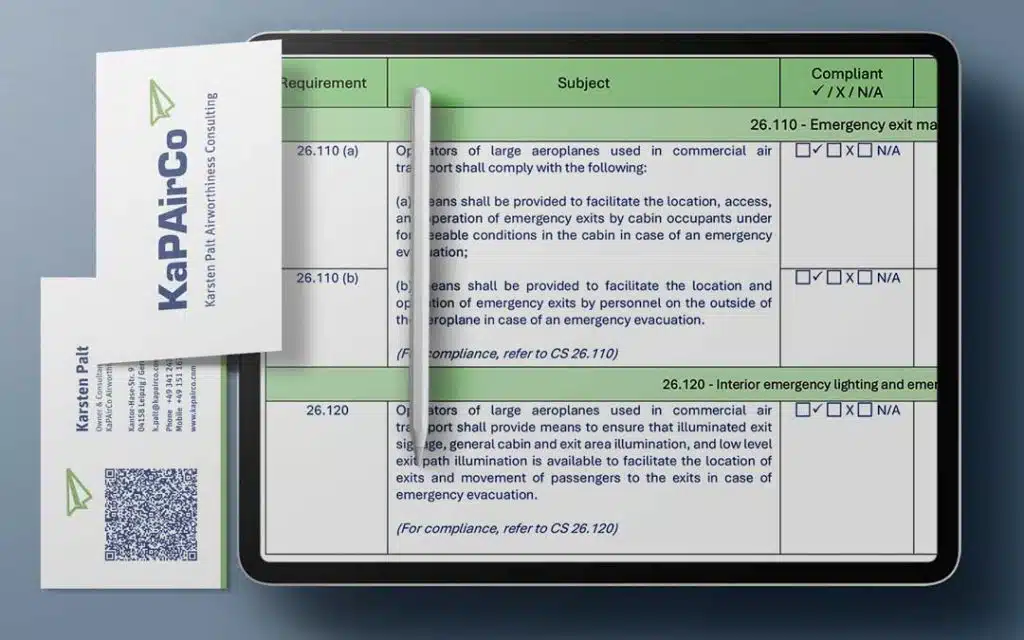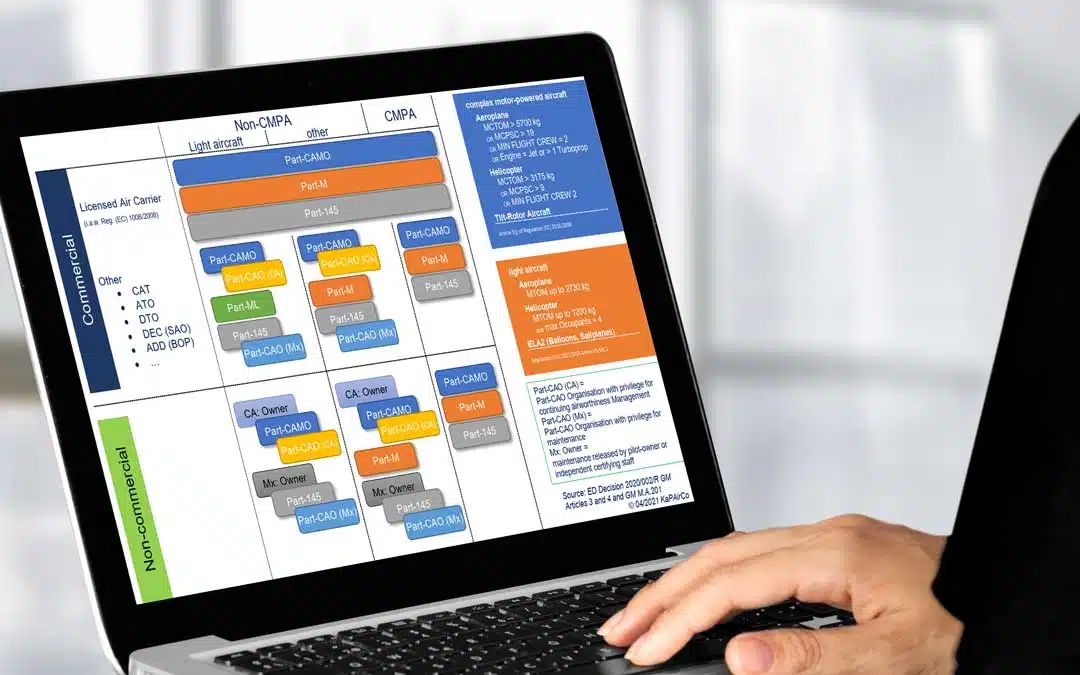Part-26 / CS-26 are Additional Airworthiness Specifications
Part-26 was implemented by Commission Regulation (EU) 2015/640. The EASA issues certification specifications and guidance material for additional airworthiness specifications for operations (CS-26). The CS-26 are non-binding technical standards issued by EASA which indicate the means to demonstrate compliance with Part-26. The level of the CS is similar to AMC for other regulations.
The EASA issues Easy Access Rules which include the EU requirement (Part-26), the certification specifications (CS-26) and the guidance material (GM).
Commission Regulation (EU) 2015/640 (Part-26) was recently amended by Commission Implementing Regulation (EU) 2022/1254 (19 July 2022) for Large Aeroplane tire pressure monitoring and Helicopter ditching and water impact occupant survivability.
What is the reason for the Additional Airworthiness Specifications?
An aircraft design which has already been certified is not required to comply with the updated version of applicable CSs (e.g. CS-25, CS-27, CS-29) when it is produced or while in service. The EU Commission decided, that to support continuing airworthiness and safety improvements, compliance of such aircraft with additional airworthiness requirements that were not included in the initial CSs at the time of certification of the design, should be introduced.
Part-26 / CS-26 are applicable for
(a) operators of (large aeroplanes/small helicopters/large helicopters):
(i) aircraft registered in a Member State;
(ii) aircraft registered in a third country and used by an EU operator;
(b) holders of a type-certificate (TC), restricted TC, STC or a change and repair design;
(c) the applicants for a type-certificate or a restricted type-certificate for a turbine-powered large aeroplane […].
Who is responsible for the operator?
For the operators in most cases the CAMO as the responsible organisation within the operator for the continued airworthiness, and required by Part-M M.A.302 for amending the aircraft maintenance program (AMP) for which Part-26 needs to be considered.
Structure of Part-26 / CS-26
Annex 1 Part-26
- Subpart A – General Provisions
- Subpart B – Large Aeroplanes
- Subpart C – Helicopters
- Appendix 1 – List of aeroplane models not subject to certain provisions of Annex I (Part-26)
What is regulated?
Some examples of regulated topics:
- Seats, berths, safety belts, and harnesses
- Emergency exits (locations, access, markings)
- Fire protection and usage of halon in fire extinguishers
- Tire pressure
- Corrosion prevention and control programme (CPCP)
- Underwater emergency exits (offshore helicopters)
- Emergency equipment for flight over water (offshore helicopters)
History / Background
Some of the requirements were existing also before introduction of the EASA as JAR-26. “Additional Airworthiness Requirements for Operations”, were issued by the Joint Aviation Authorities (JAA) on 13 July 1998. Outside EASA world The FAA Part 26 contains similar topics but is applicable to design holders only
How to show compliance?
Compliance is in general shown by means of a compliance list.
TC/STC-Holders or holders of change/repair design approval shall make available to each known operator of the aircraft any changes to the ICA (“Instructions for Continued Airworthiness”) required to demonstrate compliance.
The EASA provides guidance in GM2 26.1 “Demonstration of compliance”:
“For the initial issue of Part-26, which is a transposition of existing JAR-26 requirements, the operators will be responsible for showing compliance. In most cases this can be done by referring to the certification basis of the aircraft or the approved changes in which the amendment level of the certification specification will indicate compliance. […]
In the rare case where the above possibilities are not sufficient, showing compliance by the operator directly to the NAA will be difficult. They will need to involve the design approval holder of the aircraft or the approved change as relevant. This design approval holder should then apply to the EASA for certification that the design complies with the relevant CS-26 or CS-25 paragraph, special condition or equivalent safety case. With that approval information the operator can show compliance to the NAA.“
2022-11-08, Karsten Palt, KaPAirCo Airworthiness Consulting



